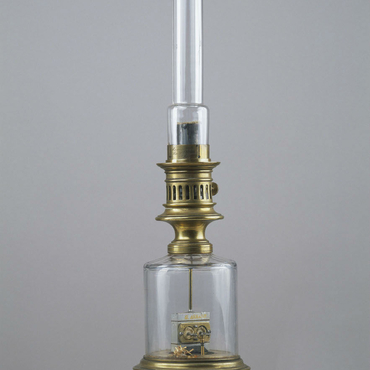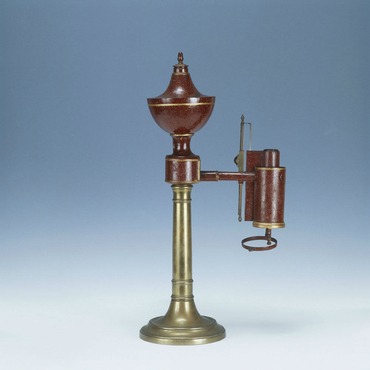
- Home
- The Age of Enlightement
- A scientific project
- The Argand lamp
In the late eighteenth century, home lighting was still based on the ancient technique of the oil lamp – a flat cotton wick drawing oil from a holder. The light was thin and weak, and the wick burnt quickly, smoked and blackened the ceiling. In 1780, a Geneva chemist, Aimé Argand (1750–1803) invented a new lamp fitted with a cylindrical wick that air could flow through and around. The result was astounding: the new lamp provided five times more light than an ordinary lamp and didn't smoke (since every part of the fuel was consumed). Argand, assured of his success, presented his invention during the États de Languedoc in 1782 and to Finance Minister Jean-François Joly de Fleury in Paris in 1783. The lamp was an immediate success – so successful, in fact, that the device, which was simple to manufacture, was copied by every lighting-maker in Paris, France and Europe. Copies appeared in the New World as early as 1890. Argand did not profit at all from his lamp. However, he quickly realised the many ramifications of his invention. He attempted to move into various markets, including those of home lamps, street lighting, theatre lighting and lighthouses. In 1803, he offered for sale a lamp for lighting up churches or large spaces. His nephew Isaac Bordier-Marcet (1768–1835), who carried on his uncle's business after his death, wrote Mémoire sur les réverbères à l’usage des phares [Memorandum on Reflectors Used in Lighthouses] in 1803, which he criticised Tourtille-Sangrain's devices. In 1807, he was contacted by the engineer Haudry from Le Havre, where he installed a "double-acting" reflector lamp in the Le Havre lighthouse, and a"sidereal" device on the Honfleur pier in Normandy. Nevertheless, the success of these devices was short-lived: they gave off a weak light and the time of the stepped lens was just around the corner. Bordier-Marcet had only the time to make changes to several lighthouses and to install some twenty pier lights before his innovation was completely eclipsed by Augustin Fresnel.

